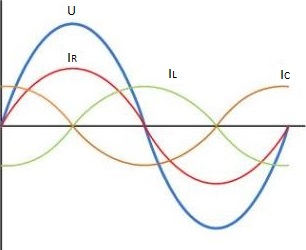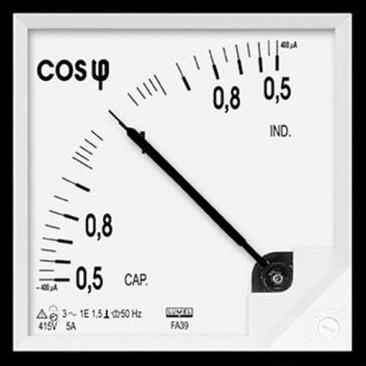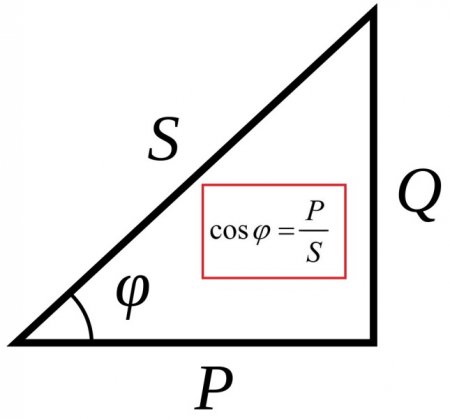How to find the power in an AC circuit
AC power is not the same as DC power. Everyone knows that direct current is capable of heating an active load R. And if you start energizing a circuit containing a capacitor C with direct current, as soon as it is charged, this capacitor will not pass any more current through the circuit.
The coil L in a DC circuit can usually behave like a magnet, especially if it contains a ferromagnetic core. In this case, the coil lead having an active resistance will be in no way different from the resistor R connected in series with the coil (and of the same rating as the ohmic resistance of the coil lead).
Either way, in a DC circuit where the load consists of only passive elements, transient processes they end almost as soon as she starts feeding and no longer show.
Alternating current and reactive elements

As regards an alternating current circuit, in it transients are of the most important, if not decisive, importance, and any element of such a circuit capable not only of dissipating energy in the form of heat or mechanical work, but also capable of the least accumulating energy in the form of an electric or magnetic field will affect the current, causing a kind of non-linear response, depending not only on the amplitude of the applied voltage, but also on the frequency of the current passed.
Thus, with alternating current, the power is not only dissipated in the form of heat on the active elements, but some of the energy is successively accumulated and then returned back to the power source. This means that capacitive and inductive elements resist the passage of alternating current.
In the circuit sinusoidal alternating current The capacitor is first charged for half the period, and during the next half period it discharges, returning the charge back to the mains, and so on each half period of the mains sine wave. An inductor in an AC circuit creates a magnetic field during the first quarter of a period, and during the next quarter of that magnetic field decreases, the energy in the form of a current returns back to the source. This is how purely capacitive and purely inductive loads behave.
With a purely capacitive load, the current leads the voltage by a quarter of the period of the mains sine wave, that is, by 90 degrees, if viewed trigonometrically (when the voltage in the capacitor reaches a maximum, the current through it is zero, and when the voltage begins to pass zero, the current in the load circuit will be maximum).
With a purely inductive load, the current lags the voltage by 90 degrees, that is, it lags by a quarter of the sinusoidal period (when the voltage applied to the inductance is maximum, the current only begins to increase). For a purely active load, the current and voltage do not lag behind each other at any moment in time, that is, they are strictly in phase.
Total, reactive and active power, power factor
It turns out that if the load in the alternating current circuit is not perfectly active, then reactive components are necessarily present in it: those with an inductive component of the windings of transformers and electric machines, capacitors and other capacitive elements with a capacitive component, even just the inductance of the wires, etc. .n.
As a result, in an AC circuit, the voltage and current are out of phase (not in the same phase, meaning that their maxima and minima do not coincide with the maximum — with the maximum, and the minimum with the minimum exactly) and there is always some lag of the current from the voltage by a certain angle, which is usually called phi. And the magnitude of cosine phi is called power factor, since the cosine phi is actually the ratio of the active power R, irretrievably consumed in the load circuit, to the total power S that necessarily passes through the load.
The ac voltage source supplies the total power S to the load circuit, a part of this total power is returned every quarter of the period back to the source (that part that returns and wanders back and forth is called reactive component Q), and part is consumed in the form of active power P — in the form of heat or mechanical work.
In order for a load containing reactive elements to work as intended, it needs to be powered by a source of electrical energy at full power.
How to calculate apparent power in an AC circuit
To measure the total power S of the load in the alternating current circuit, it is enough to multiply the current I and the voltage U, or rather their average (effective) values, which are easy to measure with an alternating current voltmeter and ammeter (these devices show exactly the average, effective value, which for a two-wire single-phase network is less than the amplitude 1.414 times). This way, you will know how much power is going from the source to the receiver. The average values are taken because in a conventional network the current is sinusoidal and we need to get the exact value of the energy consumed every second.
How to calculate active power in an AC circuit

If the load is of a purely active nature, for example, it is a heating coil made of nichrome or an incandescent lamp, then you can simply multiply the readings of the ammeter and voltmeter, this will be the active power consumption P. But if the load has an active- reactive nature, then the calculation will need to know cosine phi, i.e. power factor.
Special electrical measuring device — phase meter, will allow you to measure cosine phi directly, that is, get the numerical value of the power factor. Knowing the cosine phi, it remains to multiply it by the total power S, the method of calculation of which is described in the previous paragraph. This will be the active power, the active component of the energy consumed by the network.
How to calculate reactive power

To find reactive power, it is enough to use the corollary of the Pythagorean theorem, setting the power triangle or simply multiply the total power by the sinusoid.

